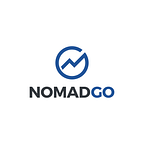Is customer abandonment preventable? 3 tips to reduce churn in restaurants, retail, and hospitality
In any restaurant, retail or hospitality business, a long line is better than no line at all. Customers might be packed inside, standing outside, or waiting around the block, but the registers are ringing and the cash is flowing inside. Business is good!
That is, until they walk out. With the convenience of online ordering, 1-hour delivery, and self-service, customers have entered the convenience era and redefined what It means for a business to be fast. A study of consumer behavior found that the average consumer will wait in line for 6 minutes before giving up and walking out, abandoning their purchase in the process. The study also found that consumers who stood in line for a significant amount of time were 77% less likely to return for a second visit.
To serve customers in the age of the ultra-fast, here are 3 quick tips to reduce abandonment and keep your lines moving.
1. Understand your speed
It’s easy for businesses to brush off abandonment as just another cost of doing business. But until brick and mortar understands the impact and severity of the problem, they’ll never see the revenue potential that’s walking out the door.
Consider implementing a queue tracking solution that quantifies how long customers wait in line throughout the day. Gather baselines from all of your stores and get insights into which ones are the fastest, and which ones need to improve.
2. Identify what’s slowing you down
Take a deep dive into your front of house operations and pinpoint where, when, and why bottlenecks are occurring. Too often brands take speed as a singular number- the number of orders that a POS can ring up over the course of an hour. Instead, consider segmenting your speed of service into various different touchpoints that happen along the customer journey. For example, a fast-casual restaurant might identify touchpoints such as queue time, production time, payment time, and pick up time. Continuous measurement of these critical segments will help pinpoint the cause of your long lines, and measure the effect of implementing changes to speed up the lines. Comparing each element across all your stores will also provide you with best practices from the fastest stores that you can apply to your slower locations.
3. Balance speed with customer service — and measure it
Studies show that the most irritating part of the customer journey is when a customer is idle and waiting in line at a point where they expect to be served, a term known as unoccupied time. However, customers don’t want to feel rushed once they’ve engaged with a team member. Businesses need to strike a delicate balance between efficiency and a positive guest experience,. Just as you should measure speed, you should also capture how your customers feel about the entire experience. Quick surveys and other systems that provide a glimpse into customer sentiment can help provide the data to ensure you’re providing the right balance of efficiency and customer service.
Using Nomad Go to reduce customer abandonment
Forward-thinking brands across the restaurant, retail and hospitality industries are using Nomad Go to increase customer throughput to reduce abandonment in their stores. If you’re ready to learn more about how queue management and operations efficiency can help your bottom line, set up a time with an insights expert at Nomad Go to discuss your specific use case.
